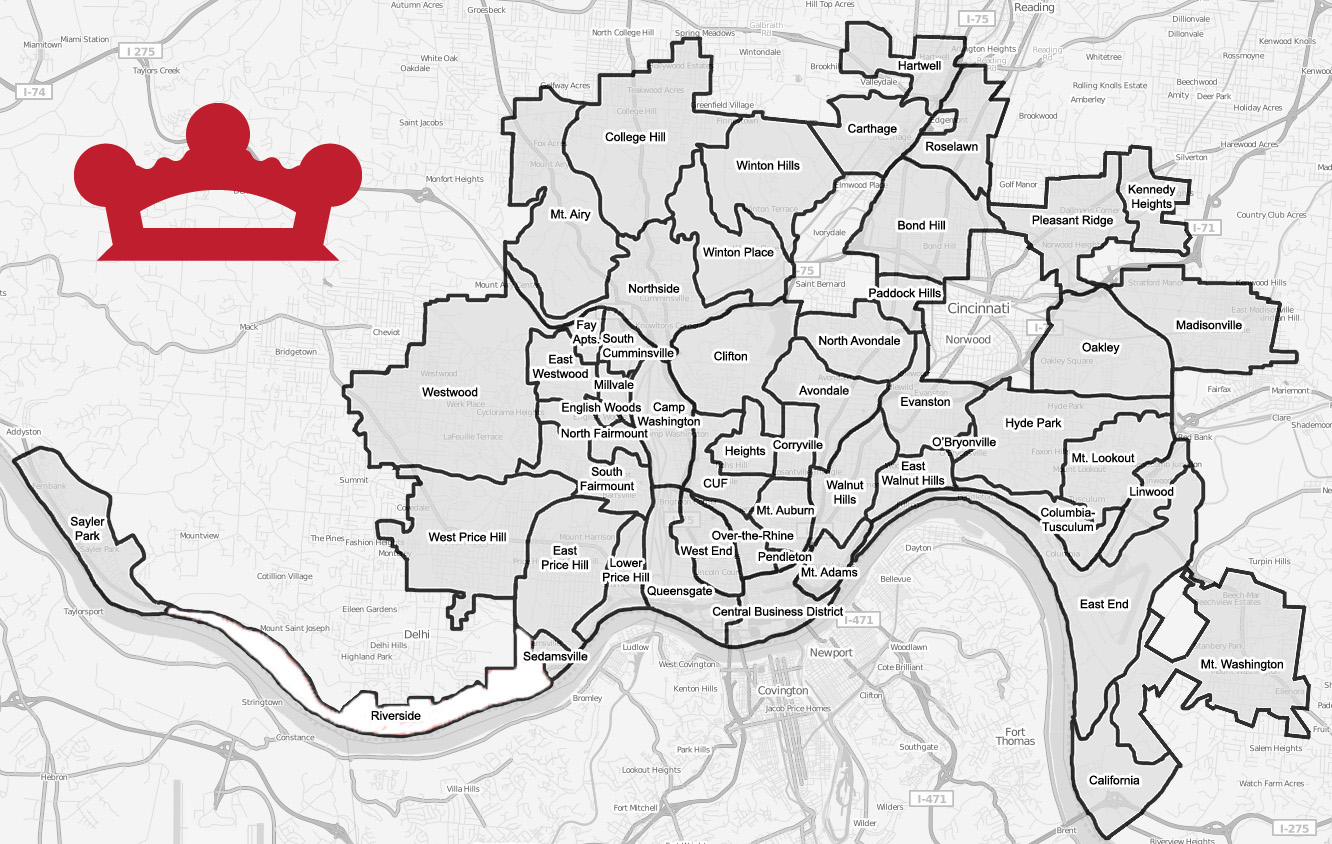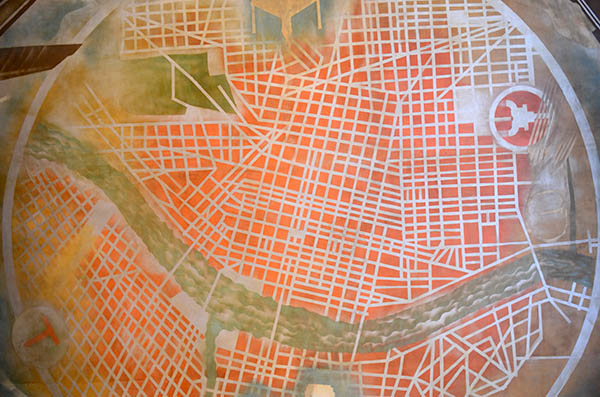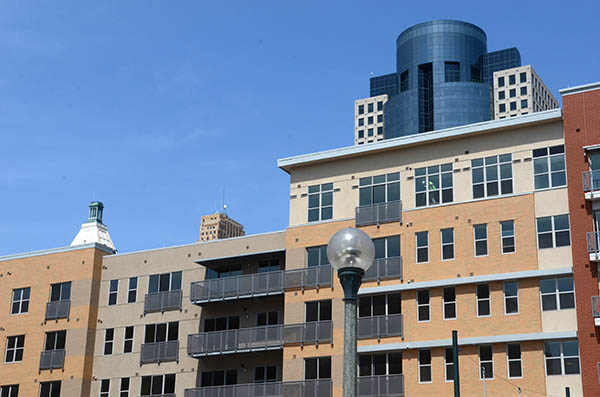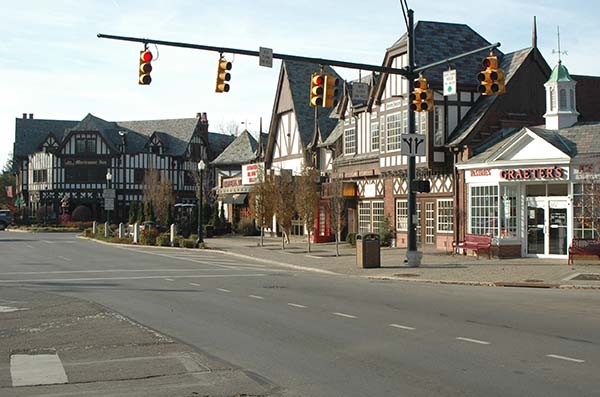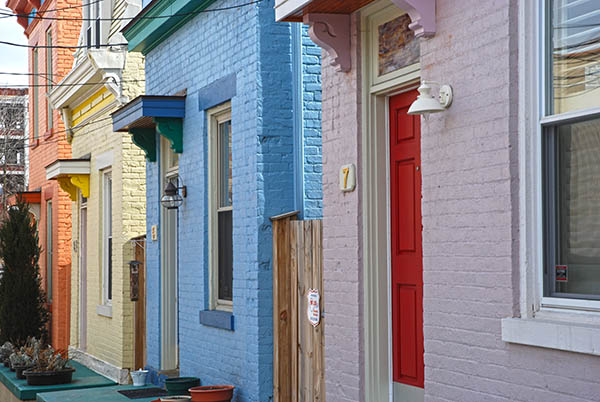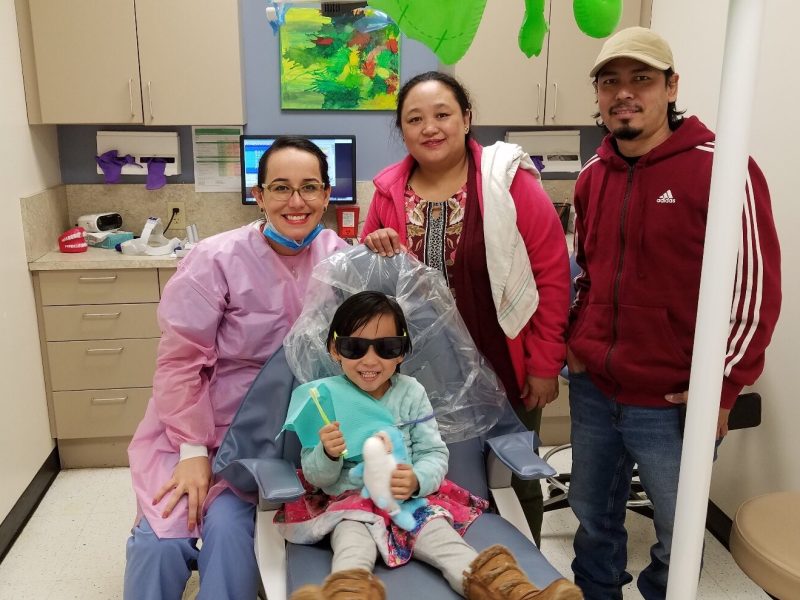Demand Better: Building healthy, vibrant neighborhoods
As we continue to reprise our four-part Demand Better series, we take a look at innovations and ideas that empower and support neighbors here and around the country—and offer some key demands for Cincinnati's future as election day approaches.
Throughout October, we’re re-running our four-part Demand Better series in an effort to spark conversations and provoke thought about how we can demand more from our city’s leaders. This week, we take a look at innovations and ideas that empower and support neighbors here and around the country, and offer some key demands for Cincinnati’s future as election day approaches.
The backstory
Cincinnati’s 52 neighborhoods are as distinct from one another as Gold Star is from Skyline—at least to their constituents. Nearly every neighborhood was at one time an independent village, but as the city grew and expanded from its origins on the Ohio River, the villages were swallowed up and incorporated into the City of Cincinnati. Still, each neighborhood maintained its unique character and today their residents proudly proclaim allegiances to Walnut Hills, Northside, Roselawn, Westwood, Over-the-Rhine and on, and on.
Each neighborhood comprises its own little world inside a much larger urban universe. Folks from Westwood or West Price Hill know little of the happenings across town in Hyde Park, Oakley, or Mt. Lookout, and those east-siders reciprocate in blissful ignorance. And Sayler Park is so far out of the orbit of the other neighborhoods that no one is sure it actually exists. (It does.)
While such lack of attention from one neighborhood toward another might seem like a weakness in the city, it is, in fact, one of the strengths of neighborhood-building; people care about where they live. Nobody knows the needs of a specific neighborhood better than those who live there. When given the proper tools and resources, residents can address problems and opportunities and effectively create better neighborhoods, sometimes more efficiently than larger outside agencies.
But Cincinnati’s neighborhoods are not so insular that they cannot recognize issues common to all of them, especially those that revolve around population, education, crime and job opportunities. There are many city, state, and federal programs and initiatives to address these issues, but thriving neighborhoods are also taking it upon themselves to engage their residents in ways that allow them to work on these issues at a grass-roots level, block by block, in their own neighborhoods. Moreover, lessons learned and successes shared in one neighborhood can often be transported into another for an “everybody wins” result.
Where we are now
“Cincinnati has had a leg up in building better neighborhoods,” says Josh McManus, Inventor at Little Things Labs, a company that identifies and acts upon pressing problems and emerging opportunities in mid-sized and post-industrial cities. “A huge influence has been the unique topography of the city and its distinctive neighborhoods.”
McManus and Little Things Labs partnered with the Haile/US Bank Foundation to help CoSign pair up local business owners in Northside with local artists and sign fabricators to create and install unique, hand-crafted storefront signage. Although it was not a project on the scale of the Washington Park renovations or the development of The Banks, it was a project that certainly enhanced the identity of the neighborhood and the sense of “place” it engenders.
“Cincinnati is incredibly good at doing big-scale projects,” McManus says, “but it seems to stumble with smaller interventions at smaller costs.”
Equipping local agencies and residents with the resources they need to capitalize on the distinctive character of their neighborhood are the keys to successful projects like Northside’s CoSign project. “Sometimes, top-down is not as resilient. Cities that are doing the best right now are working at the intersection of top-down and bottom-up,” McManus says.
Another bottom-up project that has grown in scope is Working in Neighborhoods, founded in 1978 to help Cincinnati residents find decent housing and to physically improve their neighborhoods. The organization began by offering home ownership classes and counseling, and over the years has expanded its programs to include a utility program that, in cooperation with Duke Energy, assists low-income homeowners with their utility bills; community leadership training; and other programs centered on community-building, home ownership and economic education.
In 1999, Working in Neighborhoods developed the WIN Economic Learning Campus in South Cumminsville. The five-building campus is now home to a Headstart program and a community computer lab, and offers financial literacy seminars and counseling.
Yet another piece of neighborhood development history dates back to 1982, when a 42-neighborhood coalition created a single neighborhood fund to grow community leaders and active community councils. That effort evolved into Invest in Neighborhoods, a non-profit that, as of 2012, had raised approximately $800,000 of its $1 million Neighborhood Fund goal.
In addition, until this year, Invest in Neighborhoods has administered two of the city’s most neighborhood-focused annual grant programs: the Neighborhood Support Program since 1990 and the Neighborhood Business District Support Fund since 2004. Grants from these programs, which range up to $5,000, fund neighborhood beautification projects like streetscapes as well as neighborhood festivals and other efforts to support neighborhood identity.
This year, the city decided to move NSP and NBDSF management to its own Community Development office instead of using IIN, a shift which led to confusion and funding delays for neighborhood projects. What’s next for IIN, and how the Community Development office will allocate funds, will be important for community-builders to watch in the coming years.
Support from Greater Cincinnati/Northern Kentucky’s Local Initiatives Support Corporation, or LISC, funds city neighborhood-bolstering projects in Avondale, Madisonville, Walnut Hills, Price Hill and more, pooling money from a range of local foundations and organizations and grants to target neighborhood health and well-being, from supporting the revitalization of Washington Park to the hiring of a safety coordinator for Walnut Hills.
The bigger picture
While Cincinnati is clearly working to create better neighborhoods, there is more we can learn from national experts in the field.
D:hive is an initiative in Detroit intended to assist people in finding accommodations, employment and engagement opportunities. Little Things Labs established the project three years ago at the request of Detroit civic leaders who had invited new talent to come to the city but then found that the newcomers required assistance in helping them to live, work and engage in the city. To date, D:hive has helped more than 10,000 people in Detroit.
Another bright spot in Detroit “placemaking”—a term for building better neighborhoods—is the Prevention Network and its Good Neighborhoods Community Connections small grant project. The Prevention Network is committed to helping communities prevent underage alcohol use, youth tobacco use and other substance abuse.
Community Connections is a resident-driven grant program that believes local groups and leaders are essential if neighborhoods are to create safe environments where children and youth grow up successfully. The organization awards grants from $500 to $5,000 to local groups to provide support for innovative, youth-focused, grassroots projects in six of Detroit’s neediest neighborhood.
Dan Gilmartin, CEO of Ann Arbor-based Michigan Municipal League says that “placemaking” is all about “changing a street, a neighborhood, a community from one that you can’t wait to get through to one that you don’t want to leave.”
Gilmartin points out that the model of neighborhoods built around an industry that settled in the area primarily because of available space and land, as well as cheap labor, is antiquated and does not reflect the reality of today’s young entrepreneurs who are more mobile and not interested in working on an assembly line all their lives.
“People can go anywhere now; they’re not stuck near an industrial facility,” he says. Many of these young “millennial” entrepreneurs are looking for an authentic urban experience, a richer life with an urban feel.
But it’s not just millennials who are moving to Cincinnati and other cities. “There are 78 million millennials and 84 million baby boomers—a huge number of people—that are looking for something better in their lives,” Gilmartin says. “Now people are attracted to parks and green spaces, walkable neighborhoods, mixed housing and an influx of people from the outside into authentic neighborhoods. They’re looking for places like Over-the-Rhine, which is a hot address. Over-the Rhine is one of the real leverage points Cincinnati has to offer people.”
Placemaking is all about empowering residents, but it’s also about attracting and maintaining talent in the neighborhoods. When cities measure success by per capita income they find that overall, college graduates make up about 60 percent of that success. Yet, there are obviously many more people successfully working and innovating in the cities that are not college graduates.
Carol Coletta is director of ArtPlace America, a collaboration of 13 leading regional and national foundations and six of the nation’s largest banks, all dedicated to accelerating creative placemaking throughout the U.S. ”Any major community leader that doesn’t get up in the morning thinking, ‘How can I get all my talent developed and working?’ frankly has the wrong set of priorities,” Coletta says.
The two-pronged approach of training neighborhood residents and encouraging new talent to move into the neighborhood not only creates exciting, diverse neighborhoods, but also gives a big boost to the economy of that neighborhood.
“Neighborhoods with a high concentration of poor people have continued to decline, and poor people move out of them unless people with higher incomes move in,” Coletta Says. “It’s actually economically better for poor people to be in communities where there are more college-educated people. Financially and economically they create more opportunity. If I live in proximity to people with more education, people who make more money, I’m also likely to do better.”
Demand better
Here are some ways Cincinnati residents and leaders can help build better neighborhoods in our city:
• Improve communications with and support for neighborhood community councils. After this year’s budgetary shift with neighborhood development funds, it will be especially important for city leaders to deal directly with neighbors and support their efforts to build upon successes and fix existing problems. Neighborhood leaders need a direct line to City Hall to answer their questions and offer them support if they are to be effective community-builders.
On another community council note, pay attention to who is leading community councils. Community councils need to be made up of a mix of neighbors, business owners and developers, and ideally, some of those members wear multiple hats. Without a diverse community council, constituent needs can be easily bypassed in pursuit of profits. City leaders need to help nurture and grow the development of strong community councils as well as try to ensure that long-term neighborhood health and well-being remains at the core of council decisions.
• Support more collaborative placemaking initiatives like CoSign. Funded privately, CoSign provides a creative model to engage neighborhood businesses and local creatives to build neighborhood pride, support local business development and spur tourism. City leaders need to make it easier for projects like CoSign to cut through administrative red tape and streamline application and permit-granting processes. That way, the city can realize big wins, neighborhood by neighborhood, all the while offering incentives for artists and branding professionals to build their lives in the city. Remember the importance of attracting and retaining talent?
• Brag about our schools. Members of the creative class graduate from college here, start businesses here and then want to raise families here. Cincinnati Public Schools is a national model that attracted New York mayoral candidates to town, so why do locals still harbor such skepticism about the district’s progress?
While the city has no jurisdiction over public schools, leaders can make a point of highlighting progress and success, celebrating the district’s triumphs and supporting efforts to build neighborhoods around schools throughout the city, not just in higher-income neighborhoods.
• Build neighborhood pride. As developers move into neighborhoods, city leaders need to ensure that standards are in place to make sure that development conforms to the unique character of the various neighborhoods.
• Build transportation systems to better serve the neighborhoods and to promote cooperation and collaboration between them. This includes building the fully expanded streetcar route, as well as expanded Metro service and light rail to connect the suburbs with Cincinnati neighborhoods.
• Be a champion of mixed-income housing and mixed housing types and show how incorporating levels of diversity can not only be successful, but also benefit the city as a whole. Mixed-income housing developments, especially those that allow for different points of entry (apartments, condos, single-family homes) allow long-time residents to live alongside new neighbors who can enrich the neighborhoods with new ideas, income and potential for economic growth. Talented young professionals want to live in unique spaces with character, which Cincinnati has in abundance.
• Use open data to help residents help one another and themselves. Sharing open data between the city, businesses, non-profits and citizens would help provide the resources for residents, empower them and give them a vested interest in the success of their neighborhoods, all while encouraging civic pride and providing job opportunities.
NOTE: We’ll explore the local open-data movement in depth next week, in the fourth and final installation of Demand Better Cincinnati.

